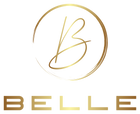When it comes to achieving the perfect set of nails, aspiring nail technicians often find themselves torn between using Builder Gel and Builder in a Bottle (BIAB). Both products offer unique benefits, but they also come with their own set of challenges. Understanding the pros and cons of each can help you make an informed decision about which is best suited for your nail care routine.
In this article, we will break down the differences between Builder Gel and BIAB, providing you with a clear understanding of each product, and how you can use them effectively to create stunning nails.
What is Builder Gel?
Builder Gel is a thick, viscous gel used to create nail extensions and overlays. It's known for its strength and durability, making it a favourite among nail technicians for creating long-lasting manicures.
Pros of Builder Gel
- Strength and Durability: Builder Gel is renowned for its strength, making it ideal for clients who are hard on their nails or need extra durability.
- Versatility: It can be used to sculpt nail extensions of various lengths and shapes, providing a versatile option for nail art and design.
- Self-Levelling Properties: Builder Gel has self-levelling properties, which means it smooths out on its own, reducing the need for excessive filing.
- Customisable Thickness: You can control the thickness of the application, allowing for both natural-looking and more dramatic nail designs.
Cons of Builder Gel
- Requires Skill: Applying Builder Gel correctly requires practice and skill. Beginners may find it challenging to achieve a smooth, even application.
- Curing Time: Builder Gel requires curing under a UV or LED lamp, which can add time to the nail service.
- Removal Process: The removal process can be time-consuming, as it often involves soaking off the gel, which can be messy and require patience.
What is BIAB (Builder in a Bottle)?
Builder in a Bottle, or BIAB, is a type of gel product that combines the strength of a builder gel with the ease of application of a gel polish. It's often used for overlays and strengthening natural nails.
Pros of BIAB
- Ease of Use: BIAB is applied like a gel polish, making it more accessible for beginners who may struggle with traditional Builder Gel.
- Natural Look: BIAB can be applied in thin layers, offering a natural look while still providing strength to the nails.
- Quick Application: The application process is generally quicker than traditional Builder Gel, making it a time-efficient option for nail services
. - Strengthens Natural Nails: BIAB is excellent for strengthening weak or damaged natural nails, promoting healthier nail growth.
Cons of BIAB
- Limited Extensions: While BIAB can add some length, it's not ideal for creating very long extensions, which may limit design options for clients seeking dramatic nail lengths.
- Less Versatile for Sculpting: Compared to traditional Builder Gel, BIAB is less versatile for creating intricate nail shapes and designs.
- Removal Process: Like Builder Gel, BIAB also requires soaking off, which can be time-consuming and require care to avoid damaging the natural nails.
Comparing Builder Gel and BIAB
When comparing Builder Gel and BIAB, consider the following factors:
- Application Technique: Builder Gel requires more skill and precision, while BIAB offers a simpler, more straightforward application process.
- Strength and Durability: Both provide strength, but Builder Gel is generally stronger, making it suitable for more demanding nail designs.
- Design Versatility: Builder Gel allows for more creativity in terms of nail shapes and extensions, while BIAB is best suited for natural overlays and modest extensions.
- Time and Convenience: BIAB tends to be quicker to apply and more convenient for clients who prefer a natural look with added strength.
Practical Tips for Using Builder Gel and BIAB
Tips for Builder Gel Application
- Preparation is Key: Ensure the natural nails are well-prepped, free of oils, and properly buffed before application to enhance adhesion.
- Use the Right Tools: Invest in quality brushes and a reliable UV/LED lamp for curing to achieve the best results.
- Practice Makes Perfect: Take the time to practice your application technique to become comfortable with the viscosity and self-levelilng properties of Builder Gel.
Tips for BIAB Application
- Thin Layers: Apply BIAB in thin layers to prevent bubbling and ensure a smooth, even finish.
- Cure Correctly: Follow the manufacturer's instructions for curing times to avoid under-curing or over-curing the product.
- Maintenance: Schedule regular maintenance appointments to fill in growth and maintain the strength and appearance of the BIAB nails.
Conclusion
Both Builder Gel and BIAB offer unique advantages for nail technicians looking to create beautiful, durable manicures. Your choice between the two will largely depend on your skill level, the desired nail design, and your client's preferences.
Builder Gel is an excellent choice for experienced technicians looking to create long-lasting, intricate designs. On the other hand, BIAB is perfect for those seeking a quick and easy application process with a natural finish.
By understanding the strengths and limitations of each product, you can confidently offer your clients a tailored nail service that meets their individual needs. Whether you choose Builder Gel or BIAB, mastering these techniques will enhance your nail artistry and ensure your clients leave with nails they'll love.









